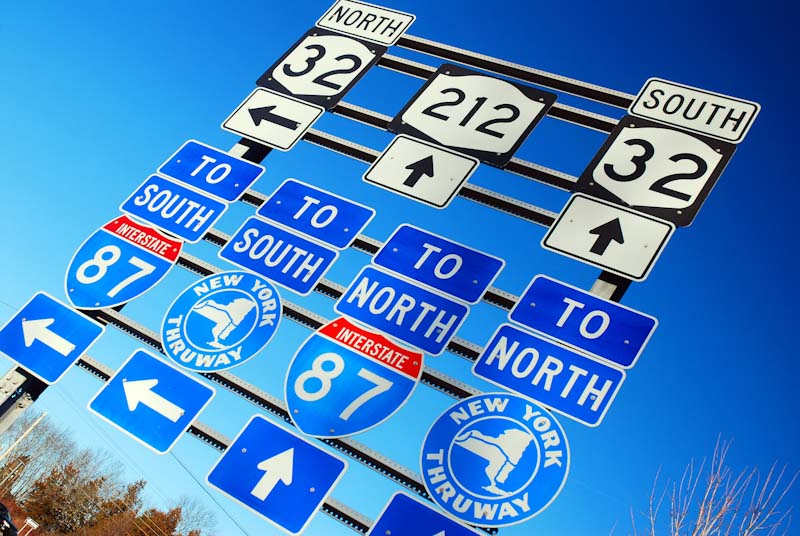Thruway Seeks New Tolls To Fund Operations, Capital Plan Thru 2027
TRIP Report Tells Why
By JOHN JORDAN – May 19, 2023
ALBANY—As vehicle traffic returns to pre-pandemic levels, the New York State Thruway Authority is facing a significant funding backlog in coming years, according to a report released recently by TRIP, a national transportation research nonprofit based in Washington, DC.
The report released on May 4 stated that the New York State Thruway Authority faces a funding gap of $1.2 billion through 2031 to maintain its high levels of safety and service, maintain good infrastructure conditions, support operations, and maintain debt service coverage at appropriate levels.
The TRIP report, “The New York Thruway: The Empire State’s Main Street,” finds that from 2012 to 2019, the number of annual trips on the New York Thruway increased by 8% before dropping 19% in 2020 due to the COVID-19

pandemic. By 2021, Thruway vehicle travel had returned to near pre-pandemic levels and is projected to increase by 9% from 2022 to 2031. In 2021, passenger vehicles made up 83% of Thruway travel, while large trucks and other commercial vehicles consisted of 17% of Thruway travel.
New York’s Thruway system is funded from tolls and payments received from concessionaires at the Thruway’s 27 service-area restaurant and gasoline stations. A 2022 report prepared for the New York State Thruway Authority by Stantec Consulting Services found that annual revenue from tolls on the Thruway increased 16% from 2012 to 2019, from $638 million to $740 million. Toll revenues decreased 17% from 2019 to 2020 as a result of the COVID-19 pandemic before rebounding to $760 million in 2021. Thruway toll revenues in 2022 are expected to total $811 million. From 2022 to 2031, New York Thruway toll revenue is expected to increase by 7%, reaching $867 million, with the number of New York Thruway trips anticipated to increase by 9%. Overall, New York Thruway toll revenue is projected to increase by 36% from 2012 to 2031.
Due to additional investment in system rehabilitation coupled with an increased reliance on borrowing, New York Thruway’s annual debt service payments increased by 69% from 2012 to 2021, from $200 million to $340 million. From 2022 to 2032, annual debt service is anticipated to increase by 78%, from $306 million to $543 million. Overall, from 2012 to 2031, the Thruway’s annual debt service is projected to increase by a total of 171%.
Annual investment in highway and bridge rehabilitation on the New York Thruway dropped from $322 million in 2012 to $236 million in 2022—a 37% decrease. And, while annual investment in highway and bridge rehabilitation on the New York Thruway is expected to increase 24% from 2022 to 2031, reaching $294 million, this is still 9% below the level in 2012.
Projected Thruway revenues through 2031 are not anticipated to be sufficient to meet the systems’ rehabilitation needs, the report stated. Through 2031 the Thruway Authority has a $1.2-billion funding gap in revenue needed to maintain its high levels of safety and service, maintain good infrastructure conditions, support Thruway operations, and maintain debt service coverage at appropriate levels. Current toll rates per mile on the New York Thruway System, and rates proposed for 2024, are well below rates on most similar toll facilities in the northeastern U.S.
“The New York Thruway System is critical to the quality of life of New Yorkers and the health of the state’s economy, allowing New York to maintain a reliable supply network, providing regional connectivity and allowing for personal mobility,” said Dave Kearby, TRIP’s executive director. “Ensuring that the extensive and aging New York Thruway System continues to provide reliable and safe access will require that an adequate level of investment is made in the system to improve its condition, safety and efficiency.”
“It’s beneficial for a group like TRIP to make a data-based assessment of New York’s most important roadway,” said Michael Fleischer, former New York State Thruway Authority executive director and currently a senior advisor with Brown & Weinraub. “This review shows that the system is amongst the safest highways in the nation, but it requires continued and increased investments so it can continue to best serve its customers. The Thruway’s proposed targeted toll adjustments clearly are critical and necessary to its ability to maintain and preserve this critical asset.”
Significant increases in the cost of highway and bridge improvements could threaten the ability of the Thruway Authority to improve the condition, safety and reliability of the Thruway, TRIP officials stated. The Federal Highway Administration’s national highway construction cost index, which measures labor and materials cost, increased by 50% during the 21 months from the start of the first quarter in January 2021 to the end of the third quarter in September 2022.
The New York State Thruway Authority released a statement to CONSTRUCTION NEWS in response to the TRIP report, which stated: “Today’s report by TRIP is another indication of how critical it is for the Thruway Authority to increase revenue, as we do not receive any dedicated federal, state, or local tax dollars to cover the costs of operating and maintaining the Thruway. The Thruway Authority’s number one priority is the safety of our roadway. The average age of the Thruway’s 815 bridges is 55 years old. More than 85 of those bridges will need to be replaced within the next decade and the projected cost is roughly $800 million.”
